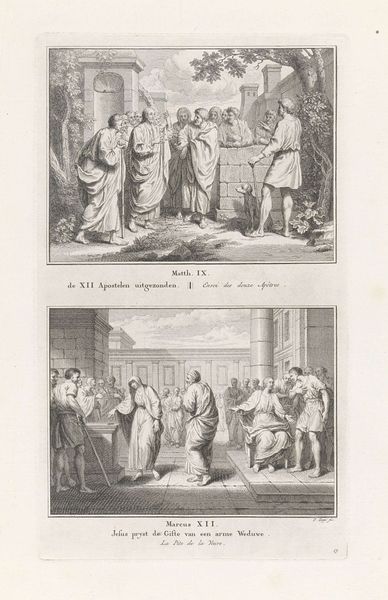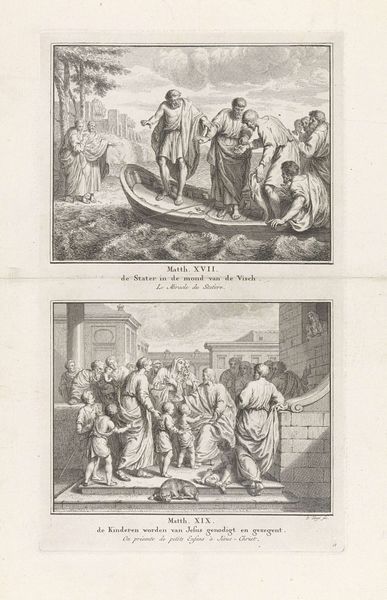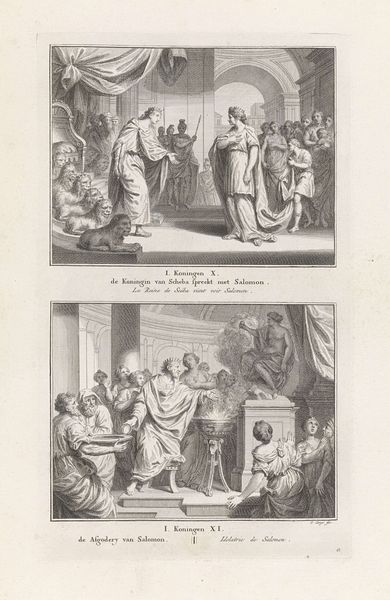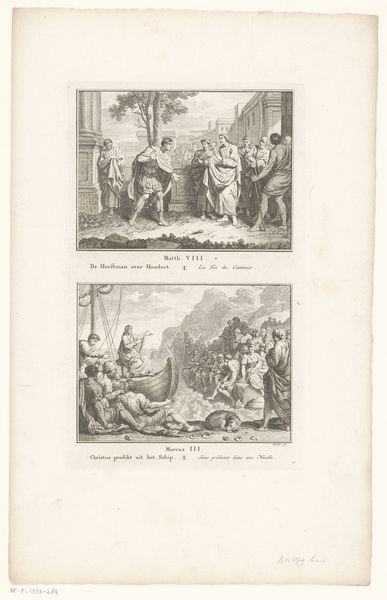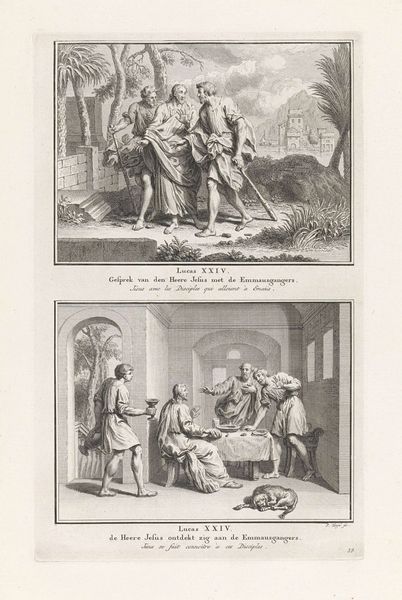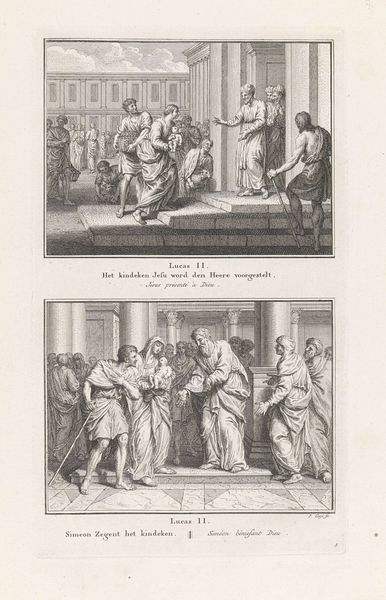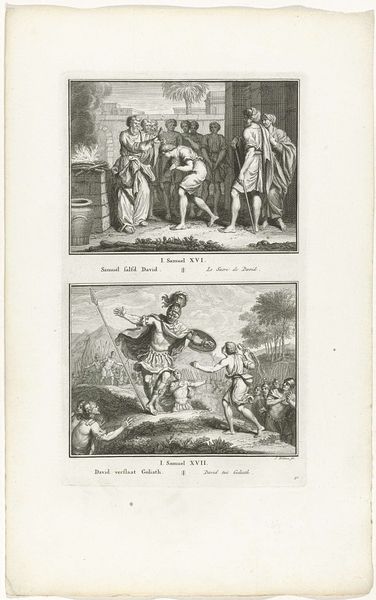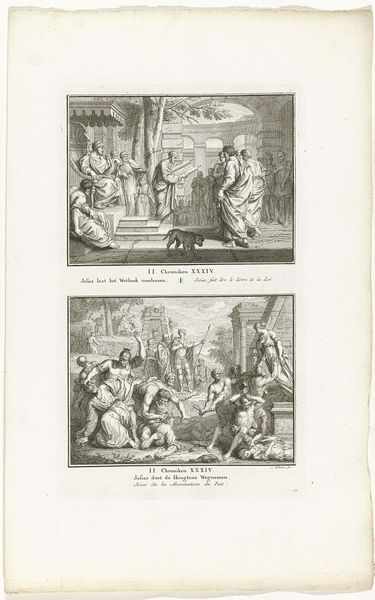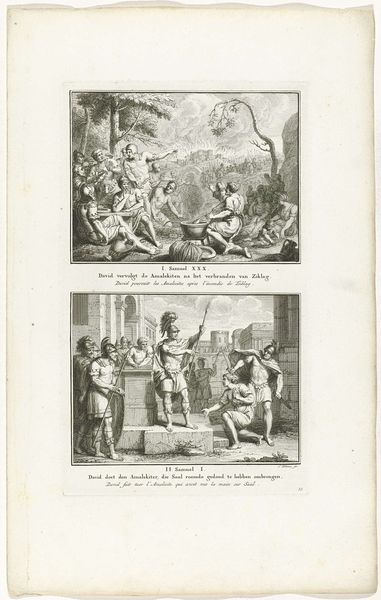
Genezing bij het bad van Betzata / Christus en zijn leerlingen op sabbat in de korenvelden 1716 - 1791
0:00
0:00
print, engraving
#
narrative-art
#
baroque
# print
#
old engraving style
#
history-painting
#
engraving
Dimensions: height 323 mm, width 187 mm
Copyright: Rijks Museum: Open Domain
Pieter Tanjé created this print, "Healing at the Pool of Bethesda / Christ and His Disciples on the Sabbath in the Cornfields," using engraving, a technique that demands careful labor. Engraving involves meticulously cutting lines into a metal plate, which then holds ink to transfer an image onto paper. Look closely and you can see the crisp lines that define figures and architecture, a testament to Tanjé's skill. This process wasn't just about aesthetics. The labor-intensive nature of engraving meant prints like these were relatively costly. They catered to a market of educated, affluent consumers, spreading religious stories but also showcasing artistic skill and the value of detailed craftsmanship. By understanding the printmaking process, we can appreciate how the image's creation is deeply intertwined with the social and economic conditions of its time, blurring the lines between art, craft, and commerce.
Comments
No comments
Be the first to comment and join the conversation on the ultimate creative platform.
